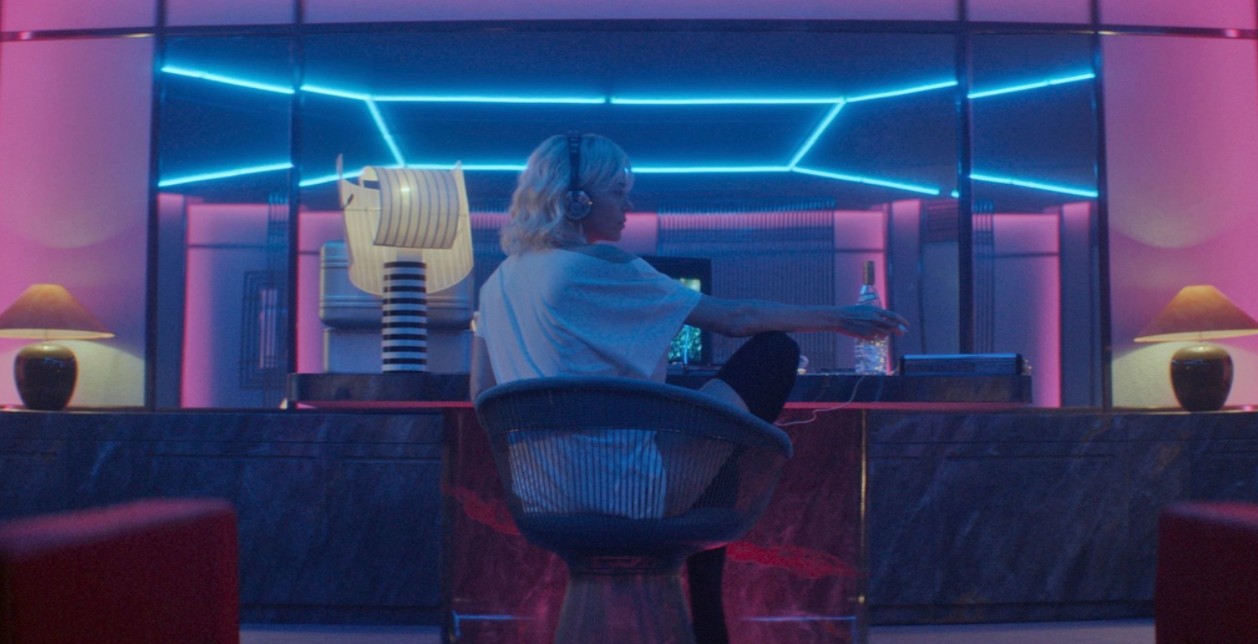If you thought times of political tension were anything new, Atomic Blonde is the perfect slick, yet cheeky action, yet historical film to remind you that “the world is run on secrets.” Or as Beyoncé might say, “Who run the world? Secrets.” That being said, the steely, impossibly cool demeanor of Lorraine Broughton (Charlize Theron) makes her the exemplar of working in covert ops. She is the type of woman who takes baths in ice and, further, only drinks Stoli on ice. She doesn’t need anyone, nor does she want him (though, now and again, she may want her). Her impenetrability isn’t fully put to the test, however, until her “superior,” Eric Gray (Toby Jones), sends her on a mission to Berlin to find out why another agent, James Gasciogne (Sam Hargrave), was taken out by a KGB assassin, and further, whose hands a certain list featuring the names of every undercover agent working in Berlin has gotten into. Based on Antony Johnston and Sam Hart’s graphic novel, The Coldest City, the Lorraine of the silver screen is a woman who stabs men rotely with her red high heel and will engage in sex with either gender if she feels it can generate useful information.
But, in a truly symbiotic production universe, every great hero needs an equally great one to guide from behind the camera. As a former stunt double for the likes of Jean-Claude Van Damme and Brad Pitt, David Leitch’s transition to a director of highly choreographed action films is a natural fit for this type of aforementioned guidance–and his keen eye for authentic (albeit occasionally hilarious) combat scenes is almost omnipresent. His flirtation with other avenues in the industry, from writing the action parody Confessions of an Action Star to serving as a second unit director on multiple movies, resulted in his debut as a director with John Wick. It all seems to have been leading up to the flawless, highly attentive to detail Atomic Blonde. And to help with said intentness is screenwriter Kurt Johnstad, best known for penning the script to 300, adding yet another veteran in the realm of action to the movie’s arsenal.
It’s the subtle touches in Atomic Blonde that make it feel most genuine, true to its era. Every nuance has the stamp of deliberateness: from a bus whizzing past in London featuring “FIGHT APARTHEID” (something Theron knows all about, herself born in South Africa) in giant letters as Lorraine goes to her MI6 debriefing to the movie playing in Berlin being Stalker–the late 80s finding the work of Andrei Tarkovsky particularly apropos. And, of course, Leitch doesn’t let us forget the influence of MTV in 1989: we’re even shown a clip of Kurt Loder giving his take on the fall of the Berlin Wall, in addition to asking if the year’s hottest music trend–sampling–is innovative, or just plagiarizing? And, speaking of MTV as it was in the 80s, the music throughout Atomic Blonde proves that soundtracks are making a comeback, each track highlighting a memorable scene, whether it’s Lorraine strangling someone to the tune of George Michael’s “Father Figure” or being told a secret as “Voices Carry” by ‘Til Tuesday punctuates the need to “hush.”
Leitch is all too adept with the glossy effects, too, from sprayed on graffiti titles to inserting that old film reel effect of a frame in the strip getting seared as Lorraine asks, “You know those movies that slow down and then fizzle–and then burn? That’s Berlin.” And oh, what an accurate metaphor as Lorraine touches down in a PanAm plane and instantly gets into her first fight with two presumable Stasi or KGB agents. Her introduction to David Percival (James McAvoy, still challenging himself with role choices post-Split), MI6’s station chief in Berlin, is thus a rocky one as he chases after her in his own car as she kills her first two bees in the hornet’s nest.
Echoes of Bret Easton Ellis’ American Psycho intermixed with Quentin Tarantino’s Kill Bill reworked into the spy genre are at their most pronounced in the bright lights of the club scenes–club culture being so much a part of Berlin in any decade. It is in this setting that Lorraine is formerly introduced to her impending bedfellow and fellow spy, Delphine Lasalle (Sofia Boutella, who let’s not forget, truly got her start as a dancer in Nike commercials and for Madonna on The Confessions Tour). Lorraine subsequently meets Delphine at another club where the latter half-heartedly attempts to pursue her rock star dreams (the other dream is being a poet). In neon above the dance floor is a sign that reads: That Which You Desire Is On the Other Side of Fear. How fitting for a city plagued by a wall put in place over political differences. And yet, as Percival iterates to Lorraine during one of the many denouements in the third act, we’re always told that things will be different once we break on through to the other side. But proverbial walls have a tendency to be reconstructed time and time again.
So yes, while Atomic Blonde might be viewed as a summer blockbuster by some, it isn’t lacking in its relevant political themes. It may also not be capable of instantly securing a sequel the way the other “it” female action movie of the summer, Wonder Woman, has, but it’s certainly got potential. Or maybe, it’s so good, that it doesn’t need–nor should it have–a sequel.





















